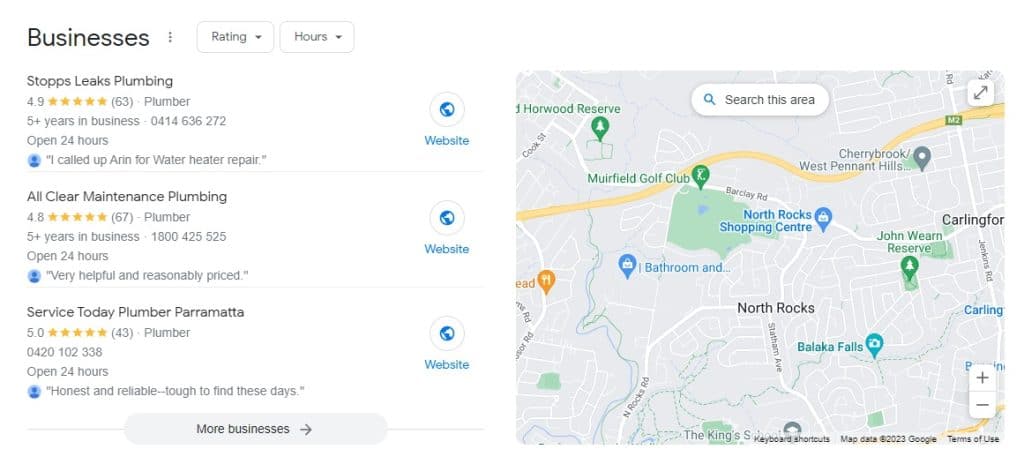WWW stands for the World Wide Web, but that doesn’t mean that if you are a supplier of local services you still cannot get great value from your website. The secret is using local SEO practices to determine your proposed market, and, if it is supplying local services, optimise your web presence accordingly. It would be a waste of time and money getting a national presence when all of your clients are local. Save time and money and generate a targeted audience for your website by optimising it correctly.
1/ Finding the right keywords.
First step is to determine your keyword targets to ensure there is an audience for what you are targeting. For example, let’s say you are a plumber based in Parramatta, which is a suburb in Sydney’s west. A client’s first thought would be to target keywords such as “Plumber” or “Plumber Sydney”, as search levels would be high for these keywords, but competition levels would also be high and visitors generated not targeted. Why try to attract visitors to your site who will never use your services, or whom you could not possibly supply services to due to their location?
Looking at location specific terms not only lessens keyword competition, but also increases the relevance of the traffic generated, meaning not only will you rank more quickly for them, but the traffic volume generated, while maybe lower in actual volume, has a much higher conversion rating. This ultimately means you are better off.
2/ Optimising the website content
Google’s main method of determining your website service area is by looking at the content. When targeting a specific area, ensure the content reflects that. Do not talk about Sydney plumbing, but focus on the area you are targeting. Individual pages for each location/suburb you service, with unique content, is a fantastic way to get local focus as well as providing your site with a bigger website footprint. Also ensure, if you are based locally, that your contact page reflects this with a local address and phone number.
3/ Google Local listing.
Google provides a free business listing that should be utilised. When using the search term “Plumber Parramatta”, as shown in the red box in the example below, you will see the business listing appearing on the front page, which comes from its Google business listings directory.

To be included in this listing, simply search “Google places for business”, then click on the link, create an account, and follow the formalities. Not only does it place you in the free directory, with proper promotion by your local SEO specialist, it gives you an opportunity to appear on the front page, and it also helps your website’s organic ranking, by localising your site to that area you wish to target.
4/ Make use of Local Directories and Review Sites
Ensure all your local listings in yellow pages, true local or whatever your local equivalents are; list not only your location but also your website. This again helps Google confirm your geographical location. Most of these sites (including Google local listing) have review functions. Ask your clients to add reviews to give listings more weight, which has the net effects that your site will receive more weight too.
This is obviously a very simple guide to local SEO, but by following these quick steps you are on the way to getting your local service-based web
